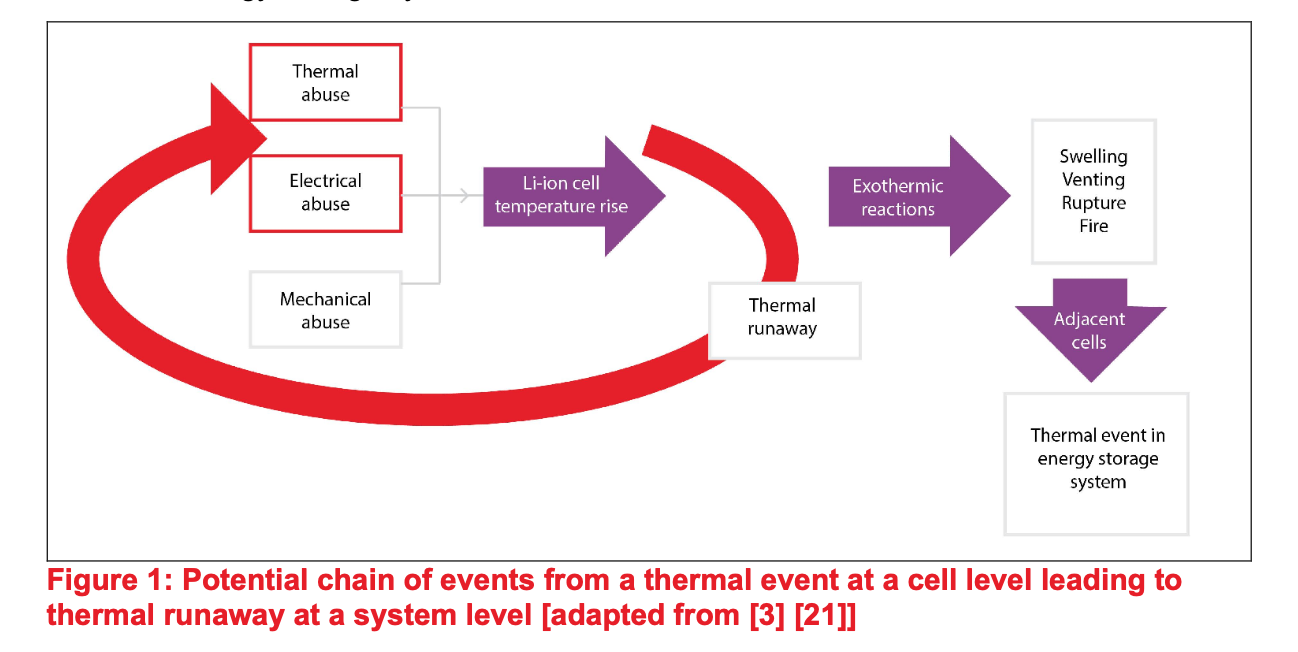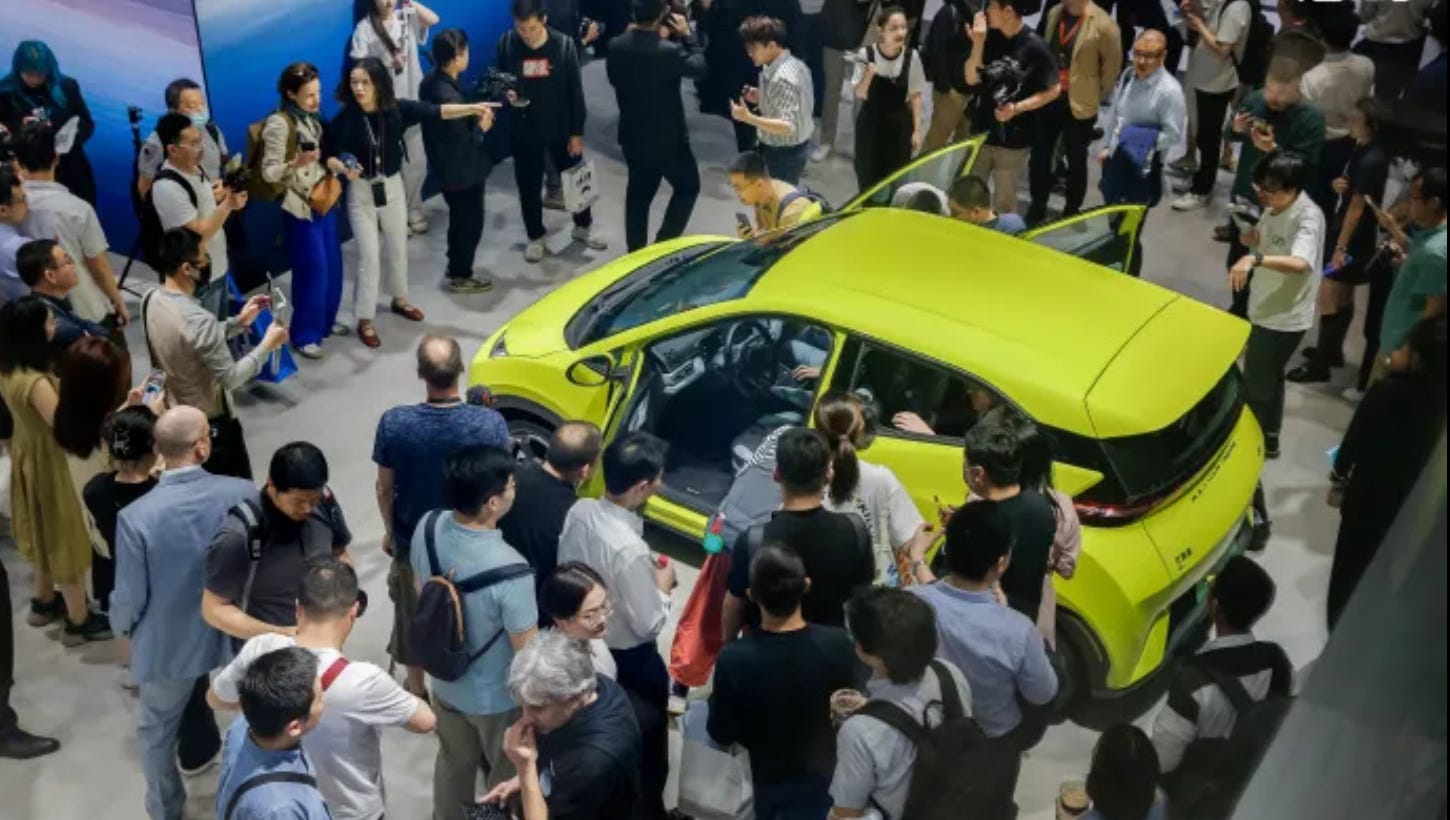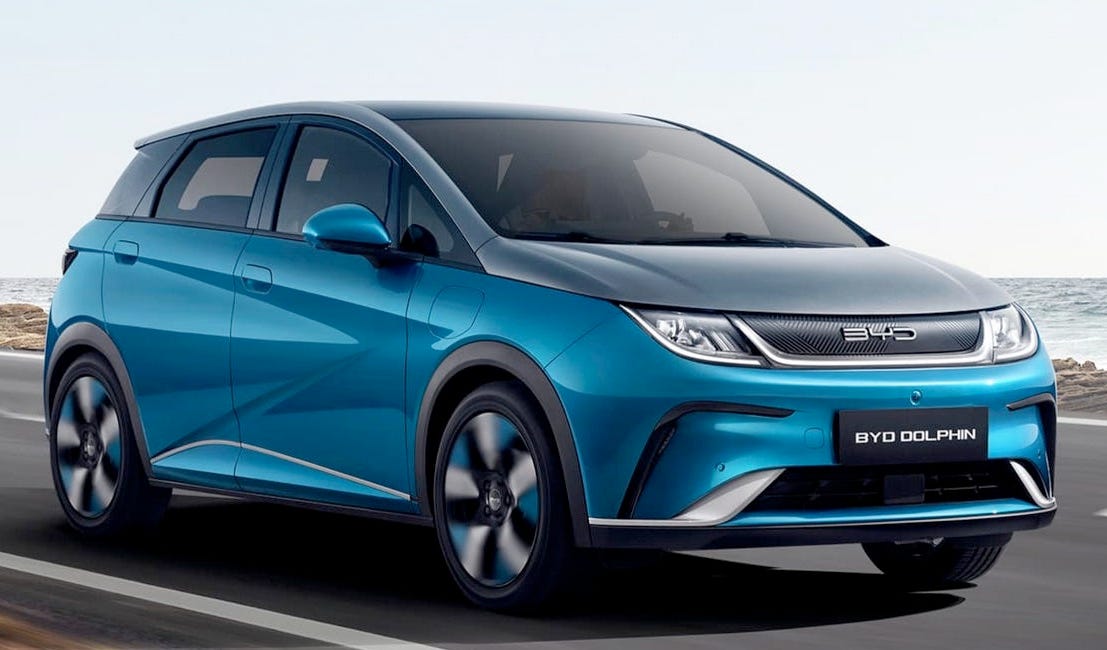EV & Car Park Fire Risk Report: Key Findings & Implications
In the aftermath of the Luton airport car park fire catastrophe, let's have a look at a recent detailed report about fire risk and possible mitigation measures.
The report, titled “Covered car parks - fire safety guidance for electric vehicles,” produced by consulting firm Arup on behalf of UK’s Department for Transport, and published this July 2023, delves into the details of car park fire risks and mitigation.
The report, which focuses on electric vehicles and EV charge points, but does not look in details at hybrids, including plugin hybrids, offers lots of most interesting content to understand the fire risks associated with electric vehicles and charging stations. It discusses a range of possible mitigation measures.
The full report is worth reading, and reading should certainly not be limited to the executive summary (often a bad habit of executives! :) as the most interesting content is in the detailed analysis.
Highly interesting sections of the report include:
2.1: Overview of fire hazards associated with electric vehicles,
This section discusses the concepts of thermal runaway and the types of fires or explosions that can occur.
2.1.2: Four fire scenarios: free burning fire, jet fire, flash fire and vapour cloud explosion.
The report looks at the issue of re-ignition:
“An EV fire is harder to extinguish and may re-ignite. Re-ignition of the battery occurs when other nearby cells within the battery pack become damaged in the initial incident and go into thermal runaway sometime after.”
“Following initial suppression, it was found that 13% of vehicles reignited after initial suppression.”
2.2. Battery Management System (BMS) failure
“If the BMS fails, this can result in failure of the battery and a battery fire.”
“BMS is part of the car and therefore, within the control of the manufacturer to develop mitigation measures to prevent failure of the BMS.”
“Factors that can lead to incorrect function of the BMS include: Electrical fault (hardware failure); Software fault (e.g. bugs).”
2.3 Factors leading to battery fires
“Batteries in EVs are more likely to ignite if they are damaged.”
The report presents 3 types of battery abuses: thermal, electrical and mechanical.
2.3.1 Flood Damage as a Cause of EV fires
“If the battery has suffered mechanical damage, e.g. by being in a collision, then there is a risk that water could enter the battery and cause a short-circuit between cells.”
The report indicates that “flooding events have the potential to cause fires within EVs but the risk of an EV battery fire following submersion in water is low.”
Note that the report only refers to one such incident globally, yet several such incidents have occurred with recent hurricanes in Florida, as seen in this video.
2.3.2 Fires Caused by Damage to the EVCP/Charging Cable
“At the time of writing the guidance, there is limited data on whether charger power of EV charging points or the charging process itself increases the likelihood of an EV fire.”
2.4 Fire Growth
“Large-scale testing and research on firefighting approaches has identified that EVs take longer for the fire service to extinguish - approximately 6 to 49 minutes for an EV compared to 5 minutes to extinguish a typical ICEV fire.” (ICEV stands for internal combustion engine vehicle)
“An EV fire is harder to extinguish and may re-ignite. Re-ignition of the battery occurs when other nearby cells within the battery pack become damaged in the initial incident and go into thermal runaway sometime after.”
“There is currently limited experimental data evaluating the risk of fire spread between cars (EV to EV or EV to ICEV or ICEV to EV) in the literature reviewed.”
NFPA is undertaking research into modern vehicle hazards in car parks in general … the data shows that modern cars are more likely to result in quicker fire spread …”
This has been attributed to two factors: the larger dimensions of the cars leading to reduced separation distances, and the increased use of combustible material from plastics and other inorganic materials within cars.
Fire fighting approaches for electric vehicles (section 2.5)
“Approximately 10,000 L of water is required for an EV fire where the EV battery is involved in the fire, compared to 4,000 L for an ICEV fire.”
“These large quantities of water are required to extinguish the fire in the battery, though this does not account for addressing potential re-ignition.”
“The batteries are contained within sealed metal or plastic containers which makes it difficult for firefighters to apply water directly onto the battery.”
“Risk of electrocution is not considered a risk from a firefighting perspective if an EV is on fire, as the battery is not connected directly to the chassis.”
“Additional breathing apparatus may be required for firefighters due to the longer time that it might take to control an EV fire.”
“The removal of any vehicle from a building whilst burning is an onerous task, especially in urban and metropolitan areas.”
“To reduce the risk of re-ignition for EV batteries that have been partially burnt and suppressed, batteries should be monitored for a period of time with thermal imaging camera and by listening for popping, whistling or hissing sounds of thermal runaway prior to moving the vehicle to be disposed.”
“Submersion is used in some European countries to manage reignition, including the Netherlands and Switzerland. This involves recovering the EV from the building after it has been extinguished and submerging in a dedicated tank of water.”
“Research in China is investigating the installation of a local bund that can be built around the car to flood the base of the car with an extinguishing medium. … The testing involved filling up the bund whilst a fire propagated within the EV within its perimeter.”
After looking at relatively inconclusive data regarding the frequency of EV v. ICEV fires (without looking at hybrids), the report looks at ecological considerations.
2.7 Ecological Considerations
Swiss research on a 4.15 kWh battery module (compared to an EV battery system that has around 8-10 times the power), shows that:
“The firefighting water run off was found to contain contaminant levels for Lithium and heavy metal concentrations which far exceeded the limits permitted for industrial effluent entry into their sewage system.”
“This emphasizes that water used to fight an EV fire may need to undergo treatment before it can be released into sewers / the environment.”
This clearly is presently a neglected issue, but reality is that lithium battery fires lead to toxicity released in the soils, sewage systems, etc.
Mitigation Measures
From section 3, the report delves extensively into the nitty gritty of car parks and possible mitigation measures.
You are invited to read the full report for all the provided details.
Noteworthy is Table 21 presenting an “Example risk assessment process using a 3x3 risk matrix for a multi storey standalone car park.”
For a fire occurring within an ICEV/EV, it is indicated that “Presence of EVs and modern ICEVs could lead to prolonged fire duration, which could spread beyond vehicle of fire origin, leading to a multiple-car fire” and that
“A multiple-car fire could result in the structure being exposed to fire for longer than its design capacity (15 minutes). This could lead to structural failure whilst undertaking firefighting operations.”
Identified mitigation measures are to “Provide additional protection to the structure to achieve a longer fire resistance period.” and to “Provide water- based suppression to limit spread of fire from car of fire origin and limit growth/heat of fire.”
This would, according to the report, transform the risk level from “substantial” to “tolerable.”
The second example in this risk assessment addresses the issue of “Fire in EV taking longer to extinguish than ICEV fire.”
“EV fires can take longer to suppress than ICEV, even contained to a single-vehicle fire.”
“Prolonged firefighting operations could result in the structure being exposed to fire for longer than its design capacity (15 minutes). This could lead to structural failure whilst undertaking firefighting operations.”
The already mentioned mitigation measures to “Provide additional protection to the structure to achieve a longer fire resistance period” and to “Provide water- based suppression to limit spread of fire from car of fire origin and limit growth/heat of fire.”
Such measures would again, according to the report, transform the risk level from “substantial” to “tolerable.”
Some Implications of the Report Findings
From reading this report, it’s clear that there are considerable safety implications with having electric vehicles and charging stations in car parks.
The report does not even address hybrid vehicles, that usually also have ion-lithium batteries, and that, according to the report, are more likely to get on fire than EVs.
Increased Spacing Between Vehicles
A key recommendation / guidance, which would mitigate, not eliminate, the fire risk, is to increase the spacing between vehicles.
Another identified measure is to have sprinklers in car parks, to limit fire propagation. This immediately poses problems in cold climates, and again, only mitigates the risk, does not eliminate it.
Note also that further increased space is needed because of the increasing dimension of cars in the past 20 years, with SUVs, vans, etc.
And who says increased space dimensions, says … fewer parking spaces. And this, along with other measures, will mean … increased parking costs.
Protection to Building Structures
The report also highlights the issue of providing “protection to the structure to achieve a longer fire resistance period.”
On page 41, the report reads:
“Current guidance recommends 15 minutes structural fire resistance for some car park arrangements. With the integration of EVs within car parks, it could take up to 60 minutes for the fire service to extinguish the fire.”
“To account for this, a higher structural fire resistance period is needed; i.e. a minimum of 60 minutes should be considered, unless additional measures such as water-based suppression is also installed, or extensive fire damage can be tolerated without impacting the life safety of occupants or firefighters.”
This is presented as a “control measure” i.e. the less effective type of measures, in the above mentioned hierarchy of mitigation measures.
“A Minimum of 60 minutes” - compared to the current 15 minutes, is obviously a very ambitious goal.
The report does not mention how this could possibly be done, not only for new car parks, but also for existing car parks, and for other locations such as residential buildings and in homes.
This alone has considerable implications for any further EV development, if fire risk is to be taken seriously.
Note that the issue of the increasing weight of passenger vehicles generally, and of EVs in particular, requiring massive batteries weighting typically half a ton, but reaching 1.5 ton for some trucks/SUVs, is not directly addressed in the report.
If EVs become mainstream, many car park structures will simply not be fit to carry the same number of vehicles, because they were designed for lighter vehicles.
What about Safer Battery Technologies?
In terms of mitigation, the best measures are those that eliminate or substantially reduce the likelihood of the hazard.
This brings us naturally to the core issue of EV battery technology.
Should lithium based batteries continued to be used, and promoted by governments, with billions of dollars of subsidies, or should alternative, safer, technologies rather be promoted, even if presently not delivering the same performances?
BYD’s new Seagull model appears to be a first case of implementation of sodium-ion battery technology. This is a small, 4 seat cars, which is to cost some 11,300 US$, but it’s unclear if it will be sold outside China.
Sodium-based batteries are not only much cheaper but also generally considered as much safer.
The sodium-ion battery powered model would apparently have a 30 kWh battery pack and a range of 190 miles (306 km).
It’s not clear what’s the weight of the vehicle with that particular model, but the announced weight is 1240 Kg for the whole vehicle, which is less than the 1414 kg of a Volkswagen gasoline powered golf. (It’s not the same vehicle, of course)
Small, Light & Cheap — or Large, Heavy & Expensive?
This new BYD model brings to light the whole issue of the relevance of EVs and their promotion by governments, and which models should be incentivized, if any.
Should EVs be small, relatively light (not heavier than current ICE vehicles) and very affordable?
Or should they be big, heavy and expensive, as it’s the current trend in North America and in Europe, in particular?
This should be a rhetorical question, but it is not.
The viability of the nascent electric automotive industry in the US, the EU, the UK, Canada and elsewhere, is indeed substantially jeopardized with small inexpensive models such as the Seagull.
Another highly competitive, and threatening, yet pricier, Chinese model is the Dolphin, presently offered only with a ion lithium battery apparently, but expected to become available with a sodium-ion battery too.
Let’s finish this post by mentioning this just released report on CNBC, which stresses the very current and considerable issue of EVs piling up at dealerships in the U.S.
There is lots of hesitancy these days about buying such vehicles.
In September 2023, the report says the average transaction price for an EV in the US was US$ 53,000 or higher.
Imagine how will people react if they realize there is a 11,300 US$ decent electric car that they can buy!
And that it would likely be safer to park this car in their garage, than the currently available, much more expensive, models!
By the way, 11,300 US$ is less than the price of some models of … mountain bikes in the U.S.! Here is an example of a US$13,000 mountain bike.
And keep in mind, this report about car fires, which produce pretty toxic emissions / fumes, originates from none other than … UK’s Office for “Zero Emission” Vehicles. :)
(that was the article’s clown world commentary :)
Find the report by the Arup consulting firm at this link.
Comments are welcome. Please share and subscribe.
RELATED:
Practical Advice if You Get Caught into a Car Park Fire or if Your Vehicle Catches Fire
Australian Auto Expert John Cadogan just released an extremely informative video, with practical advice about what to do in case you get caught into a car park fire or if your vehicle catches fire.
















I know a good mitigation strategy. Don’t buy an electric car. It is the newest scam and causes even more pollution to the earth than oil does. Lithium batteries are extremely toxic.
These pertinent facts don't matter when you're punting EV's, while ignoring the number of fires they have been involved in.